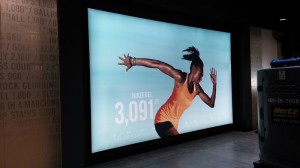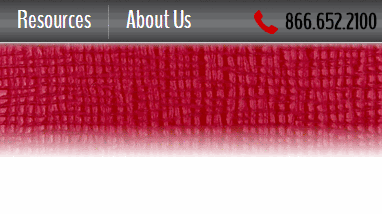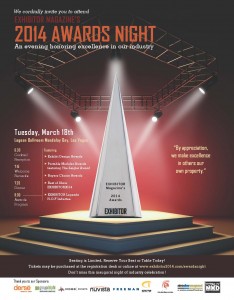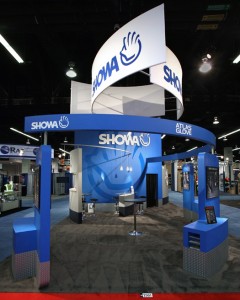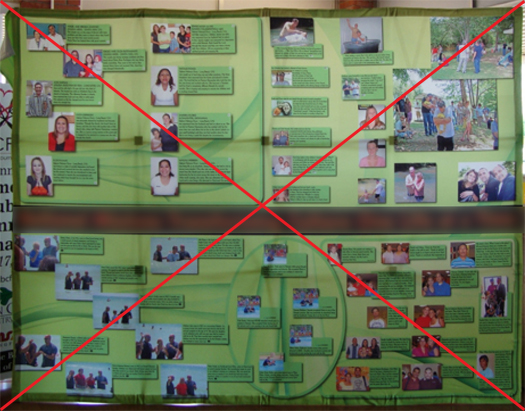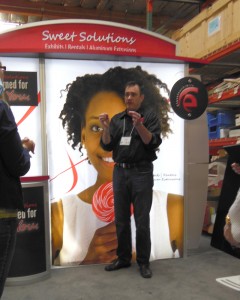 Shared Knowledge University Graduates Another AMAZING Class!
Shared Knowledge University Graduates Another AMAZING Class!
A little over a week ago, Classic Exhibits held the Spring 2014 session of Shared Knowledge University (SKU). To say that it was our nicest group ever is not an overstatement. IT WAS!
Starting on Sunday May 18, 42 attendees arrived from all over the country to attend Classic Exhibits’ bi-annual training. Attendees came from as far as Pennsylvania, New Jersey and South Carolina and as close as Oregon and Washington — and many states in between. The group was the key to the overwhelming success of the event. They were prepared to learn, attentive in class, and hands-on once we hit the shop floor.
The events started casually on Sunday night where we hosted a dinner with attendees who arrived early. We had a chance to share stories at a local brewery before the event “officially” started. After that, we kicked into full gear Monday morning.
Each SKU involves a lot of preparation and a little anxiety since we want everything to be “just so.” But like always, everything went without a hitch.
As a long-time employee of Classic, one of my favorite parts of SKU is that first moment when the group arrives at our facility. It’s our home 8-12 hours a day, so seeing the reaction of the attendees as they walk in is always something I look forward to and enjoy. For most, it’s an eye-opener, with reactions of “Oh wow! You were not kidding.” The shop and the tour reinforces what they have heard from Jen LaBruzza, Reid Sherwood, Mel White and me for years.
Our proud spring 2014 graduates ranged from industry veterans of more than 25 years to folks that were new our industry. Which in itself added to the value of the session. I witnessed a lot of sidebar conversations from student to veteran where ideas were shared and contact information was swapped in hopes of helping one another on future projects.
Spring 2014 SKU Video
The two-day event was not just classroom and shop-level training. There was a lot of fun as well. We are proud of the City of Roses and love the opportunity to show all things “Portlandia,” which includes an evening at the always interesting Kennedy School in NE Portland. Originally an elementary school, it was opened in 1915, then closed in 1975, only to be re-opened in 1997 as a restaurant and hotel including many unique spaces such as the “Detention Room”…now a cigar bar and the “Gym”…now a large group event space. It’s a great place that the group enjoyed, some perhaps a little more than others. 🙂
Evening two, we ventured into the Pearl District of Portland to the Bridgeport Brewery, a restaurant and bar that was opened in what used to be one of many vacant industrial buildings in downtown Portland. The Pearl District is clearly “THE” hotspot in downtown Portland. It’s an Urban Living area complete with restaurants, coffee shops, stores, and apartments/condos.
Before dinner Tuesday night, we took a detour to the Exhibits Northwest Portland showroom for a cocktail reception hosted by Jim Shelman (GM) and the gracious staff at Exhibits NW Portland. It’s a beautiful showroom, and the ENW team created a relaxing atmosphere after two grueling days of intense training.
SKU Photos
I have received many thank you emails since sending the honored graduates on their way (after they recited their secret Graduate Pledge). In particular, I was touched by their comments about the Classic people they met, from Production to Accounting and from Design and Customer Service. Many praised their dedication, openness, and sincerity. One person asked a project manager if Classic was an Employee Owned Company because of everyone’s committment to the business and to the company’s core values of Shared Knowledge, Shared Responsibility, and Shared Success.
Time and time again, what I am most proud of is our people. Take away the shop, the products, the website. Take it all away, and we are still left with the greatest and most dedicated group of employees a company could ask for. And the fact that it “shows” to those coming just for two days is what makes SKU so successful each and every time.
So thank again to all who attended. We appreciate your business and your support for our work families and our home families. And most of all, thanks to the entire team that makes SKU . . . SKU. It’s a great opportunity for people to learn about what we do and more importantly how hard we work to make everyone successful. Finally, a special thanks to our guest speakers: Dave Brown from Optima, Eric Albery from Eco-Systems Sustainable Exhibits, and Tim Patterson, the Tradeshow Guy!
Have a great weekend with your families. June is upon us if you can believe it! We look forward to serving you as we roll into the summer.
Be well.
–Kevin
http://twitter.com/kevin_carty
http://www.linkedin.com/pub/kevin-carty/3/800/32a
p.s. Want to know what Mary Ann has to do with SKU? Well, you’ll have to attend the September 29-30 session. Contact Jen or Reid for more information.
p.s.s. Eric, you finally graduated. Dave, not yet. One more semester.
[subscribe2]

































